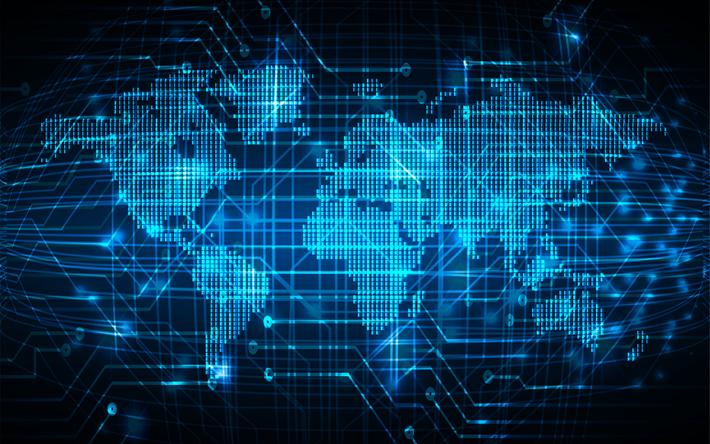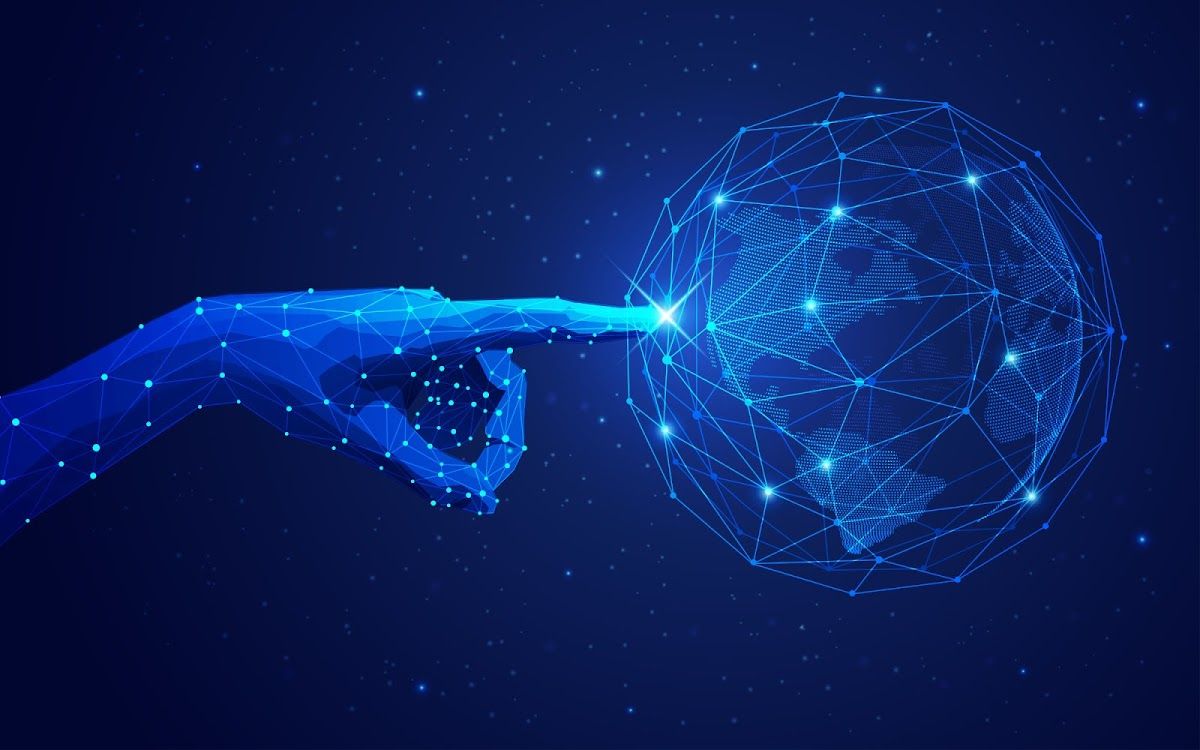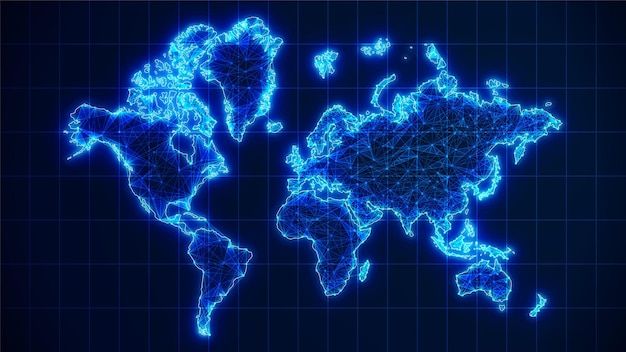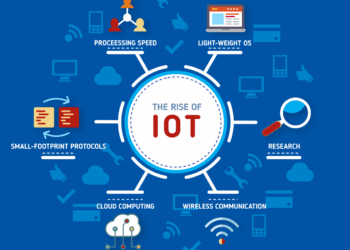In an era dominated by a handful of tech giants who control our data, our content, and our digital experiences, the internet as we know it is undergoing a profound transformation. This isn’t just an update; it’s a revolution known as Web3. It promises to shift control from centralized corporations to the users themselves, creating a new digital world built on principles of decentralization, transparency, and true digital ownership. This article will provide an in-depth exploration of Web3, tracing its evolution, breaking down its core technologies, examining its transformative potential across various industries, and confronting the significant challenges that lie ahead.
The current version of the internet, Web2, has provided us with social media, user-generated content, and a hyper-connected global community. However, this convenience came at a price: our data and digital identity became commodities owned and monetized by platforms like Google, Meta, and Amazon. Web3 represents a fundamental shift away from this model. It’s an ambitious vision for a new internet—one where users, rather than corporations, hold the keys to their own digital destiny.
A. The Evolution of the Internet: From Static Pages to Decentralized Ownership
To understand the significance of Web3, it’s essential to look back at the internet’s brief but rapid history. Each iteration has been defined by a different relationship between the user and the platform.
A. Web1: The Read-Only Internet (1990s): This was the internet’s infancy. Websites were static, and users were primarily passive consumers of information. It was an era of personal homepages, directory-based portals like Yahoo, and slow, dial-up connections. The interaction was unidirectional; you could read a website, but you couldn’t easily contribute to it.
B. Web2: The Read-Write Internet (2000s-Present): This is the internet most of us know today. The rise of social media platforms, blogs, and interactive applications allowed users to create and share content. Companies like Google, Facebook, and Twitter built massive, centralized platforms that facilitated this interaction, creating enormous value for their shareholders. In this model, users provide the content and data, but the platforms retain ownership and control over it. This led to issues with data privacy, content censorship, and the concentration of power in the hands of a few corporations.
C. Web3: The Read-Write-Own Internet (The Future): This is the paradigm shift. Web3 is built on a simple yet revolutionary idea: users should own a piece of the internet they help create. Instead of data being stored on a single company’s server, it’s stored on a decentralized network. Users can own their data, their identity, and their digital assets, moving them between platforms without permission. This vision is enabled by a suite of cutting-edge technologies.
B. The Technological Pillars of Web3: The Foundation of a New Internet
Web3 is not a single product or platform; it’s an ecosystem of interconnected technologies working in tandem to create a new digital architecture.

A. Blockchain: At its core, Web3 is built on blockchain technology. A blockchain is a distributed, immutable digital ledger. Unlike a traditional database that exists on a single server, a blockchain is shared across thousands of computers (nodes) worldwide. This makes it incredibly secure and transparent, as every transaction or piece of data is verified by the network, not by a single authority. This distributed nature is the key to Web3’s promise of decentralization.
B. Cryptocurrency: Digital currencies like Bitcoin and Ethereum are not just for speculation; they are the native economic layer of Web3. Cryptocurrencies are used to pay for transaction fees (known as “gas fees”) on the blockchain and serve as the incentive for network participants. They enable peer-to-peer value exchange without the need for a central bank or financial institution, a cornerstone of the decentralized vision.
C. Smart Contracts: These are self-executing contracts with the terms of the agreement directly written into code. They run automatically on the blockchain when predetermined conditions are met, eliminating the need for a third-party intermediary to enforce an agreement. Smart contracts are the building blocks of decentralized applications (dApps) and form the backbone of Web3’s automation and trustless systems.
D. NFTs (Non-Fungible Tokens): NFTs are unique digital assets with ownership verified on the blockchain. Unlike cryptocurrencies, which are fungible (one Bitcoin is identical to another), an NFT is one-of-a-kind. They are used to represent ownership of digital art, music, in-game items, and even real-world assets. NFTs are a key driver of the digital ownership revolution, allowing creators to monetize their work and users to truly own what they buy online.
C. Web3’s Transformative Impact: Reshaping Industries
Web3’s potential goes far beyond cryptocurrency trading. It has the capacity to fundamentally transform a wide range of industries, challenging long-established centralized models.
A. Finance (DeFi): The emergence of Decentralized Finance (DeFi) is creating a parallel financial system. DeFi platforms allow users to borrow, lend, and trade assets without traditional banks or financial institutions. By using smart contracts and blockchain technology, DeFi aims to create a more transparent, accessible, and censorship-resistant financial system for everyone, regardless of their location or economic status.
B. Gaming (GameFi): In traditional gaming, players spend money on in-game items they don’t truly own. The company can remove or alter those assets at any time. GameFi (Gaming + Finance) flips this model. It uses Web3 to create a Play-to-Earn ecosystem where players can own their in-game assets as NFTs and earn cryptocurrency by playing. This gives players real financial value for their time and effort, creating new economic opportunities within virtual worlds.
C. Social Media and the Creator Economy: The current social media landscape forces creators to rely on platforms that take a significant cut of their earnings and control their reach. Web3 offers a decentralized alternative. New social platforms are being built where content creators directly own their content and can be compensated by their audience without a middleman. This model could give power back to artists, writers, and musicians, fostering a more equitable creator economy.
D. Governance (DAOs): A Decentralized Autonomous Organization (DAO) is a new form of organizational structure. Instead of being governed by a CEO or a board of directors, a DAO is governed by a community of members who vote on proposals using a token-based system. The rules of the organization are encoded in smart contracts, making the entire process transparent and democratic. DAOs are being used to manage investment funds, social clubs, and even development projects, providing a new way to collaborate and make decisions.
D. The Road Ahead: Challenges and the Future of Web3
While the promise of Web3 is immense, it’s still in its early stages and faces significant hurdles that must be overcome for it to achieve mass adoption.

A. Scalability and Speed: Current blockchains, especially older ones like Ethereum, face challenges with scalability. They can handle only a limited number of transactions per second, leading to high transaction costs (“gas fees”) and slow speeds during peak usage. Developers are working on solutions like Layer 2 scaling solutions and new, more efficient blockchains to address this issue.
B. User Experience (UX): For the average person, interacting with Web3 can be complex and intimidating. Setting up a crypto wallet, managing private keys, and navigating decentralized applications requires a level of technical knowledge that is a major barrier to entry. For Web3 to go mainstream, it needs intuitive, user-friendly interfaces that are as simple to use as a traditional app.
C. Security and Regulation: The decentralized nature of Web3 also makes it a target for malicious actors. Hacks of smart contracts, phishing scams, and fraudulent NFT projects are a constant threat. Furthermore, governments worldwide are still grappling with how to regulate cryptocurrencies and decentralized platforms. A lack of clear legal frameworks creates uncertainty and can stifle innovation, while also exposing consumers to potential risks.
D. The Environmental Impact: The energy consumption of certain blockchains, particularly those using a Proof-of-Work consensus mechanism, has raised environmental concerns. While newer blockchains and a shift to more efficient methods like Proof-of-Stake are helping to mitigate this, it remains a critical issue that must be addressed for Web3 to be sustainable.
In conclusion, Web3 is not just about a few new technologies; it represents a fundamental philosophical shift. It’s an opportunity to rebuild the internet from the ground up, with a focus on ownership, privacy, and user empowerment. The journey to a fully decentralized digital world is long and fraught with challenges, but the potential rewards—a more equitable and democratic internet—are well worth the effort.












